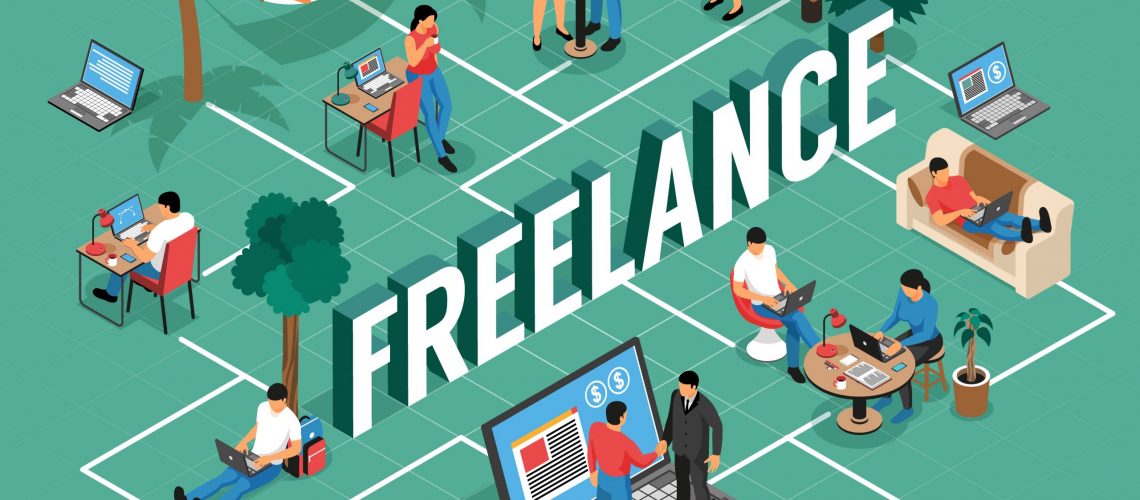The gig economy refers to workforce who rely on freelance tasks, as opposed to a full-time salary position in a company. It’s also referred as crowdsourcing where the individuals can market their skill sets (both unskilled & skilled professionals) and sell their services online on different platforms or companies.
In the 21st century digital age the workforce can work from anywhere, and the effect of globalisation to create more opportunities and expand their customers both nationally and internationally just by being part of the gig platforms.
Apart from unskilled professionals, some of the other major industries that are moving towards gig economy are Computer & IT, Writing, Accounting and Finance, Project Management, Administrative and Education and Training.
Few industries on gig economy:
- Asset Sharing Services – Digital platforms facilitating short term P2P rentals i.e. https://www.airbnb.co.in/ and https://www.oyorooms.com/
- Transportation Services – Digital platforms facilitating self-driven car owners facilitating short term P2P rentals. i.e. https://www.uber.com and https://www.olacabs.com/
- Professional (Skilled) Services – Digital platforms facilitating freelancers with customers. i.e. https://www.fiverr.com/ and https://www.upwork.com/
- Household and Miscellaneous Services – Digital platforms facilitating freelancers with customers for doing household activities. i.e. https://www.urbancompany.com/ and https://www.udemy.com/
The gig economy and the law:
Workforce on gig platforms are treated as freelancers, and hence companies avoid all responsibilities and liabilities towards them. Almost all the gig platforms have no fixed hours of work, the workforce can log in and log out as they wish, and there is no physical workplace, so there is a possibility that gig platforms claim an exemption to adhere to labour laws.
Gig workforce earns from activities outside of traditional employer employee relationships. It is equally important that the government has some code to keep these activities in order to safeguard the rights of both the platform provider and the workforce.
Advantages of the gig economy:
- Working remotely – If you’re not interested in working in an office atmosphere , the gig economy will be the right choice for you, especially for those who have a talent that doesn’t need any other individual’s support to complete the tasks. Gig economy consumers get instantly appeased and the economy grows
- Enhanced creativity – Those who work under Gig economy concept, have more freedom and creativity. They also maintain work / Life balance as they have more flexibility opportunities. They have option of doing multiple works on a day and they can choose their choice of work basis their convenience and feasibility .They can exhibit and execute their creativity and intelligence to grab work opportunities.
- Flexible work – If we talk about the people who can choose Gig economy working, it is blessing for Artisans, Students and unemployed persons those have talent but cannot stick to timings for various reasons. In case of freelancers, their creativity is they’re income and there is no barrier of time. Gig economy workers have flexibility to choose where, when and what they can work.
Disadvantages of the gig economy:
- Stressful journey – Fixed income is not expected in the gig economy and this will be stress to the worker. Lack of constant activity, searching very often for work and need of superior levels of output are major disadvantages of gig economy. This stress will be carried continuously and will have impact on the gig -economy workforce and on their families’ wellbeing
- Less Protection – The gig economy needs higher levels of discipline and resilience as it has fewer protections or insecurity due to no assurance of expected work. It doesn’t have either appraisals or perks to get motivated and no hope of promotions.
- No Benefits – Gig economy doesn’t offer any sort of EPF, health insurance, or retirement benefits. Some long-term contracts may come with limited benefit packages, at times some incentives as compared to those of a regular employee.
Conclusion:
When you look at Uber, Ola, and Fiverr, we see that many people thrive well in the gig economy. It offers an alternate work model that can provide a supplementary route to income-generating work. The gig economy is going to continue to grow at a steady pace, despite some bottlenecks due to non-existence of the right legal framework. It is important for us to understand the nature of the gig economy, how workers fit into it, and they’re demographic characteristics and how they could benefit the economy.



